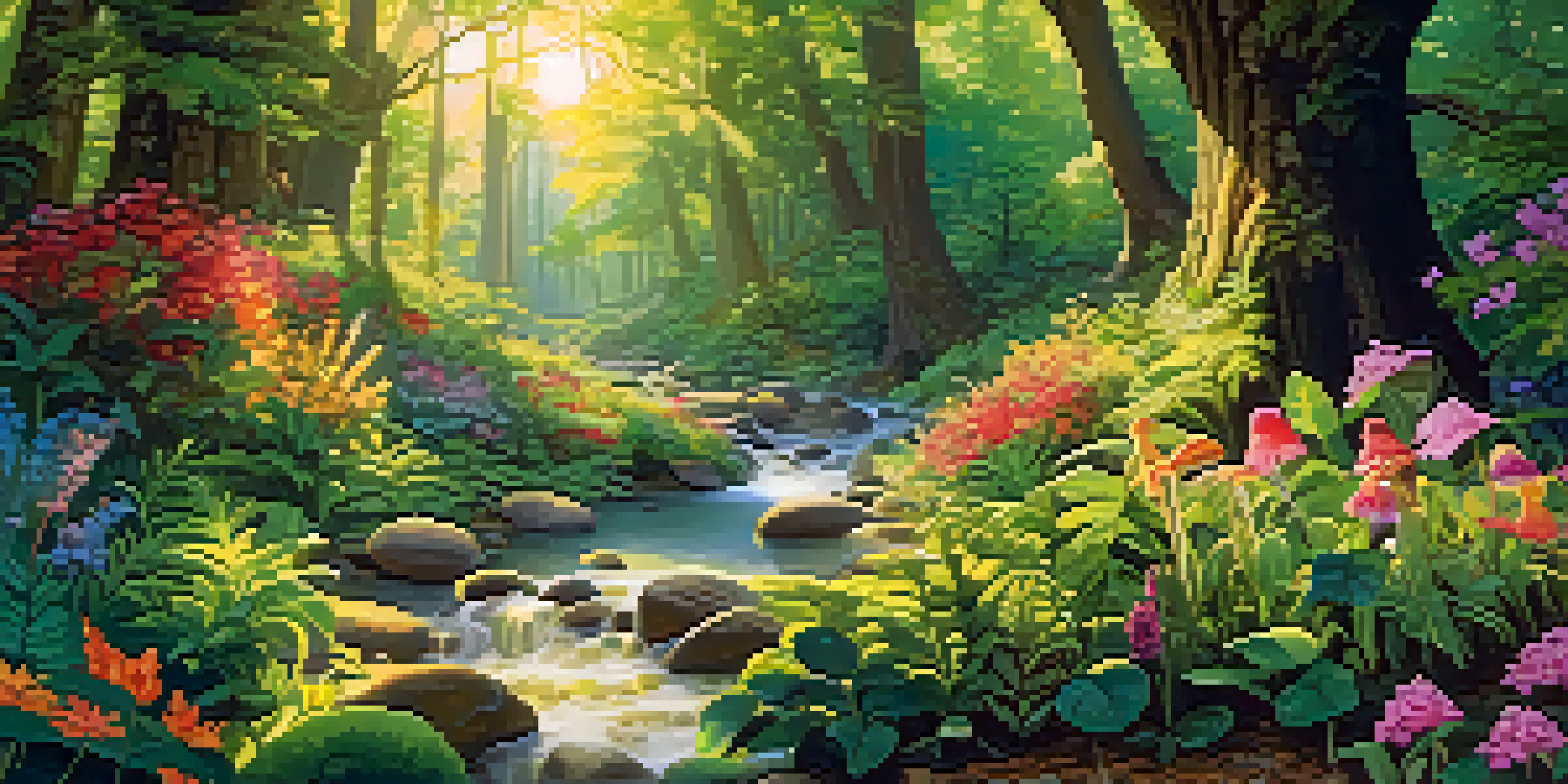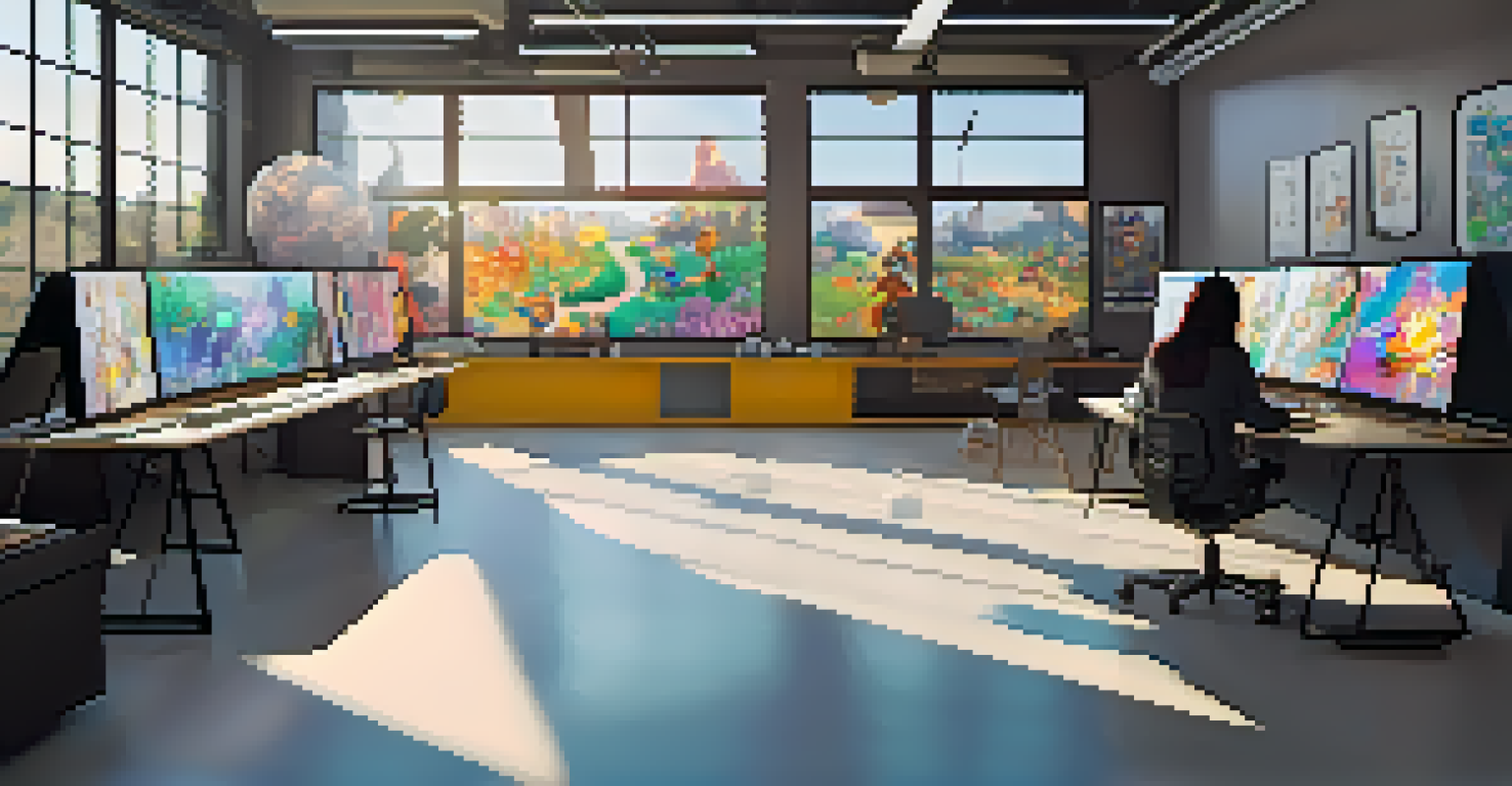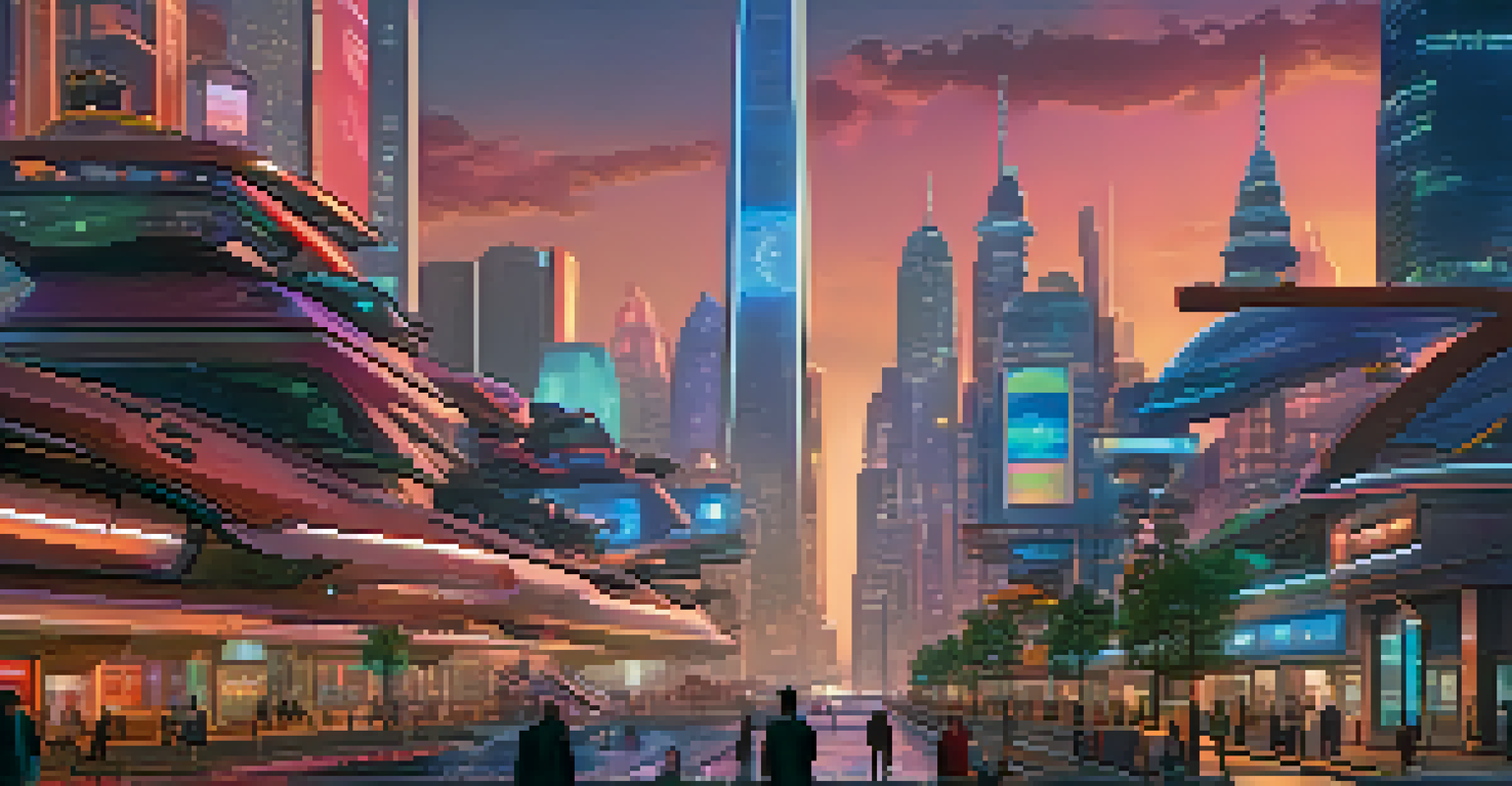The Future of Animation: Trends and Predictions

The Rise of 3D Animation in Storytelling
3D animation has been around for a while, but its role in storytelling is evolving. With advancements in technology, animators are now able to craft richer, more immersive worlds that captivate audiences. Think of how Pixar has transformed simple stories into complex emotional journeys through stunning visuals.
Animation is not the art of drawings that move but the art of movements that are drawn.
This evolution is not just about aesthetics; it’s about creating deeper connections with viewers. As audiences become more discerning, the demand for high-quality 3D animations in films, games, and advertisements is on the rise. This means animators will need to develop not just their technical skills but also their storytelling abilities.
Moreover, as virtual reality (VR) and augmented reality (AR) technologies continue to grow, 3D animation will play a crucial role in delivering these experiences. Imagine stepping into a story where you’re not just watching, but actively participating in it—this is the future that 3D animation is paving the way for.
AI and Automation: Transforming Animation Processes
Artificial intelligence (AI) is making waves across various industries, and animation is no exception. Tools powered by AI can now assist in the animation process, streamlining tasks that used to take hours or even days. For instance, imagine an AI that can create in-between frames for an animated sequence, allowing artists to focus on more creative aspects.

While some may fear that AI could take away jobs, it’s more about enhancing the animator's toolkit. By automating repetitive tasks, animators can spend more time on conceptualizing and refining their work. This could lead to a new era of creativity, where the focus shifts from technical execution to innovative storytelling.
3D Animation Enhances Storytelling
Advancements in 3D animation technology are enabling deeper emotional connections and immersive experiences in storytelling.
However, it’s essential to strike a balance. While AI can aid in the animation process, the human touch remains irreplaceable. The emotional nuance that comes from a skilled animator’s hand is something that technology cannot replicate, ensuring that the art of animation remains a deeply human endeavor.
Diversity and Inclusion in Animation Narratives
The animation industry is increasingly recognizing the importance of diversity in storytelling. Audiences are craving stories that reflect a variety of cultures, perspectives, and experiences. This shift is not just a trend; it reflects a broader societal demand for representation across all forms of media.
The best way to predict the future is to create it.
As we look to the future, we can expect more animated films and series that celebrate diverse characters and narratives. This could lead to richer, more relatable stories that resonate with a wider audience. For example, films like 'Coco' have shown how powerful and impactful diverse storytelling can be.
Furthermore, this push for inclusion is also seen behind the scenes. More diverse teams are being assembled to create animations, bringing fresh perspectives and ideas to the table. This not only enhances creativity but also ensures that stories are told in authentic ways, enriching the animation landscape.
The Impact of Streaming Platforms on Animation Trends
The rise of streaming platforms has revolutionized how we consume animation. With services like Netflix, Disney+, and Hulu, there’s a growing demand for original animated content that caters to diverse audiences. This shift has opened the doors for innovative storytelling that traditional networks might overlook.
As a result, animators now have more creative freedom and opportunities to explore unique narratives. They can experiment with different styles and formats, resulting in a rich tapestry of animated content. This democratization of animation allows for niche genres to flourish, appealing to various viewer interests.
Diversity Drives Animation Narratives
The push for diversity in animation is reshaping narratives, leading to more relatable stories that reflect various cultures and experiences.
Moreover, the global reach of streaming platforms means that animated stories from different cultures can find their way to international audiences. This not only broadens the scope of animation but also fosters cross-cultural understanding and appreciation, paving the way for a more interconnected world.
Sustainable Practices in Animation Production
As awareness of environmental issues grows, the animation industry is starting to adopt more sustainable practices. From reducing waste in production to implementing eco-friendly technologies, animators are making strides towards greener practices. For instance, studios are exploring virtual sets to minimize physical materials used.
This shift reflects a broader trend in the entertainment industry, where sustainability is becoming a priority. By incorporating eco-conscious practices, animation studios not only contribute to environmental preservation but also appeal to a socially aware audience. Viewers are increasingly supportive of brands that demonstrate a commitment to sustainability.
In the future, we can expect to see more animated projects that highlight environmental themes and messages. This could inspire audiences to engage with important issues, blending entertainment with a call to action for a healthier planet.
Interactive and Immersive Animation Experiences
As technology advances, the line between animation and interactivity continues to blur. Interactive animation experiences allow viewers to engage with content in new ways, making storytelling more dynamic and participatory. Consider how video games are utilizing animated elements to create rich, engaging worlds for players.
This trend is not limited to gaming; it’s also making its way into films and web series. Imagine watching an animated movie where you can choose the direction of the story—this is the kind of immersive experience that audiences can look forward to. It adds a layer of engagement that traditional animation cannot offer.
Streaming Platforms Revolutionize Animation
The rise of streaming services is providing animators with creative freedom to explore unique narratives that cater to diverse audiences.
As more platforms embrace interactive formats, animators will need to adapt their storytelling techniques. This could lead to innovative approaches that integrate viewer choices seamlessly into the narrative, creating personalized experiences that resonate with individual preferences.
The Future of Animation: A Blend of Tradition and Innovation
Looking ahead, the future of animation is a promising blend of tradition and innovation. While new technologies like AI and VR are shaping the landscape, the core principles of animation—storytelling, creativity, and artistry—remain vital. The challenge will be to harness these advancements while preserving the essence of what makes animation special.
Animators will continue to draw inspiration from traditional techniques, such as hand-drawn animation, as they explore modern tools. This fusion of old and new can lead to unique visual styles and narratives that captivate audiences. Think of it as a dance between the past and the future, where each influences the other.

Ultimately, the animation industry is poised for exciting developments that will redefine how stories are told. By embracing change while honoring tradition, animators can create a vibrant future filled with diverse voices and innovative ideas that resonate with audiences around the globe.